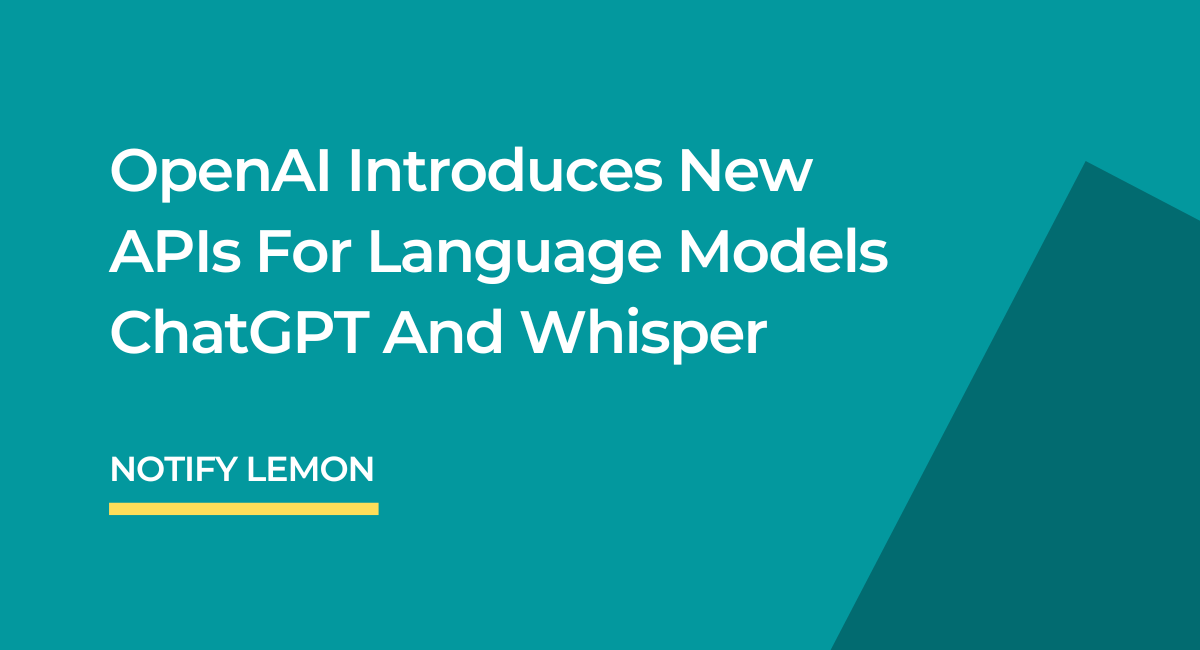OpenAI, the leading artificial intelligence research lab, has recently launched new APIs for two of its language models, ChatGPT and Whisper. These APIs are expected to offer developers new ways to build natural language processing capabilities into their applications.
ChatGPT, OpenAI’s language model that generates human-like responses to text inputs, has the potential to revolutionize the way we communicate with machines.
As chatbots and virtual assistants become increasingly prevalent in our daily lives, ChatGPT can provide a more natural and engaging conversational experience, leading to better user engagement and customer satisfaction.
What the future holds for ChatGPT
One major application of ChatGPT is customer service. Chatbots powered by ChatGPT can handle a wider range of inquiries and issues, and provide more personalized responses that mimic human interaction. This can save businesses significant resources and improve the overall customer experience.
Another area where ChatGPT can have a significant impact in healthcare. With the rise of telemedicine and remote consultations, ChatGPT can be used to generate conversational interfaces that can triage patients, provide basic medical advice, and answer common questions. This can help alleviate the burden on healthcare workers and improve access to care, especially in underserved areas.
In education, ChatGPT can be used to create more engaging and interactive e-learning experiences. Virtual assistants powered by ChatGPT can provide personalized feedback and support to students, helping them learn more effectively and improving their retention of knowledge.
As ChatGPT continues to evolve and become more sophisticated, its potential applications will only continue to grow. With its ability to generate natural and contextually relevant responses, ChatGPT has the potential to change the way we interact with machines, making them more intuitive, personalized, and human-like.
ChatGPT is a language model that is designed to generate human-like responses to text inputs. It is based on the GPT architecture, which has been trained on a massive corpus of text data.
With ChatGPT API, developers can easily integrate the language model into their applications and enable chatbots and virtual assistants to communicate more effectively with users.
This is what Whisper promises
Whisper is a language model that is designed to generate text that is similar in style and tone to a given input. It is based on OpenAI’s GPT-3 architecture and can be used to generate text for a wide range of applications, including chatbots, virtual assistants, and automated content creation.
One of the main applications of Whisper is automated content creation. With the rise of content marketing and social media, businesses are constantly in need of high-quality content to engage with their audience.
Whisper can be used to generate articles, blog posts, social media captions, and other types of content that are tailored to a specific brand’s style and voice.
Another application of Whisper is in natural language processing. By generating text that is similar in style and tone to a given input, Whisper can be used to improve the accuracy and effectiveness of chatbots and virtual assistants.
This can lead to a more natural and intuitive user experience, improving engagement and customer satisfaction.
Whisper also has potential applications in creative writing and storytelling. It can be used to generate plot summaries, character descriptions, and even entire storylines, providing inspiration and ideas for writers and authors.
The takeaway
OpenAI’s decision to launch these APIs is part of its efforts to make its cutting-edge AI technology more accessible to developers and businesses.
By providing easy-to-use tools that can be integrated into existing applications, OpenAI hopes to accelerate the development and adoption of AI-powered solutions in various industries.
The launch of these APIs is also expected to spark innovation and creativity among developers, as they explore new ways to leverage the power of AI to solve real-world problems. With the rapid advancement of AI technology, the possibilities for what can be achieved are virtually endless, and OpenAI’s APIs are just the beginning.
